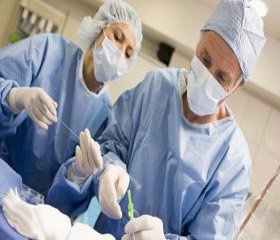Журнал «Медицина неотложных состояний» 1 (56) 2014
Вернуться к номеру
Pathogenetic role of hypertriglyceridemia in complications during postoperative period in patients with pancreatic injuries
Авторы: V.V. Boyko, K.V. Gorbenko
Рубрики: Медицина неотложных состояний
Версия для печати
Pancreatic traumais one of the most complicatedproblems of emergency abdominal surgery. Of all the injuries of the abdominal cavity pancreatic trauma frequency ranges from 1 to 20 % and is characterized by high mortality, reaching 73 %. Mortality rate is 52–75 %, 61 % of which is associated with the development of post-traumatic pancreatitis (PTP). PTP is the mixed variant of pancreatic necrosis accompanied by mortality in 22–73 %, frequent development of severe forms and difficulties in therapeutic concepts.
One of the metabolic risk factors for acute pancreatitis is hypertriglyceridemia observed in 12–38 % of patients. The reason for raising the level of triglycerides in the posttraumatic period may be increased level of stress hormones, resulting in activation of sympathetic-adrenal and hypothalamic-pituitary-adrenal system, accompanied by accelerated lipolysis in adipose tissue. The riskof the development of acute pancreatitis significantly increases when the level of triglycerides is higher than 100 mg /dL.
The aim of our study was to determine the role of serum triglyceride concentration in the diagnosis of posttraumatic pancreatitis at different stages of its development.
Clinical groups and methods.The study was performed by analyzing the clinical cases of 100 patients with pancreatic trauma, treated in polytrauma department of Kharkiv Municipal Clinical Hospital of Emergency Medical Help.Determination of triglycerides in the blood serum was performed on the 1st, 3rd, 5th, 7th, 9th, 14th and 21st day of postoperative period using enzymatic colorimetric method.
Results.It was found that the level of triglycerides in the serum of patients without PTP didn’t statistically significantly change during the treatment period.
However, in determining the concentration of triglycerides in patients with PTP increasing of their serum level starting from the 3rd day after the injury by the end of hospital stay was found. The maximum level of triglyceridemia, which is almost twice higher than the initial level in this group of patients, was observed on day 9 of treatment.
Conclusions. Determination of triglycerides in serum of patients with pancreatic injuries in the dynamics of traumatic disease can be considered as one of the informative diagnostic markers of posttraumatic pancreatitis.

